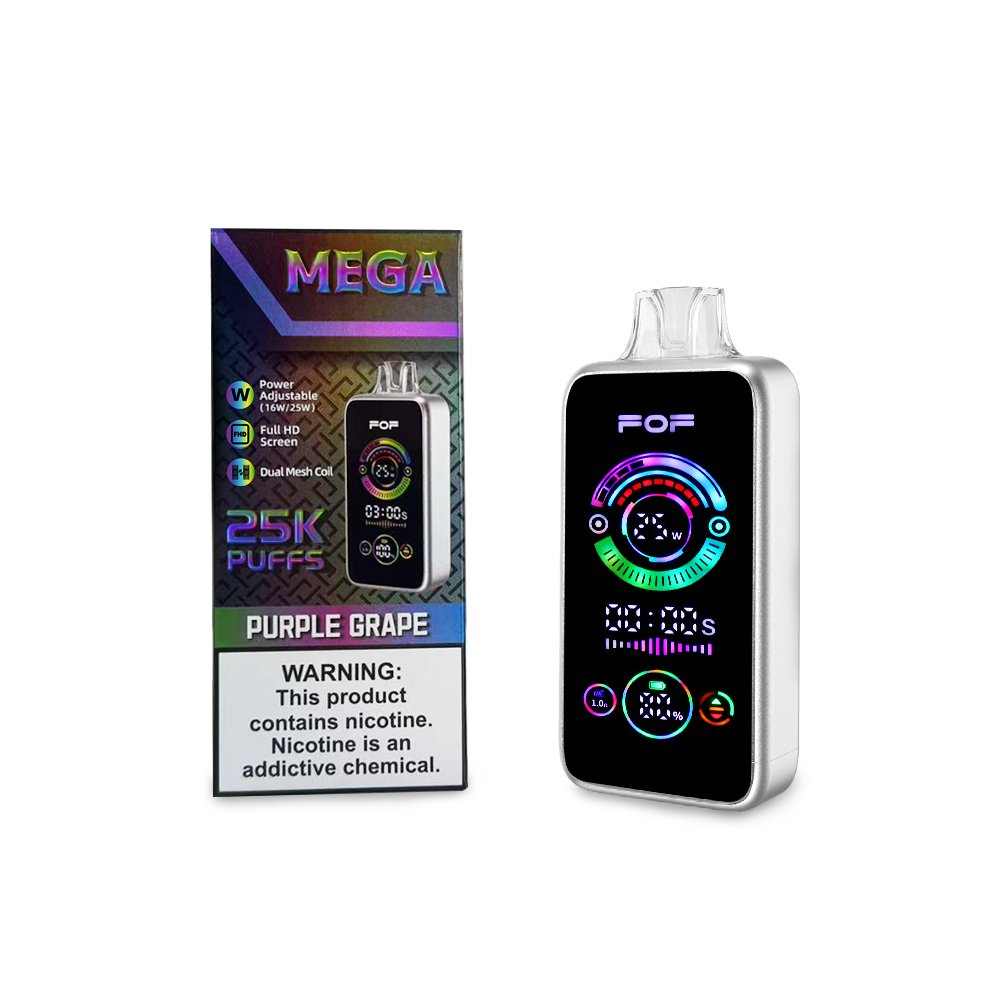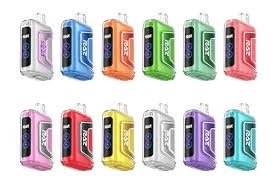Disposable vapes offer convenience, but what happens when they stop working? Can you revive them, or are they truly single-use?
While disposable vapes are designed for single use, there are a few things you can try to make them work again. Check for airflow blockages, ensure the battery isn't dead, and warm the device slightly. However, these fixes are often temporary, and disposables are ultimately meant to be replaced.
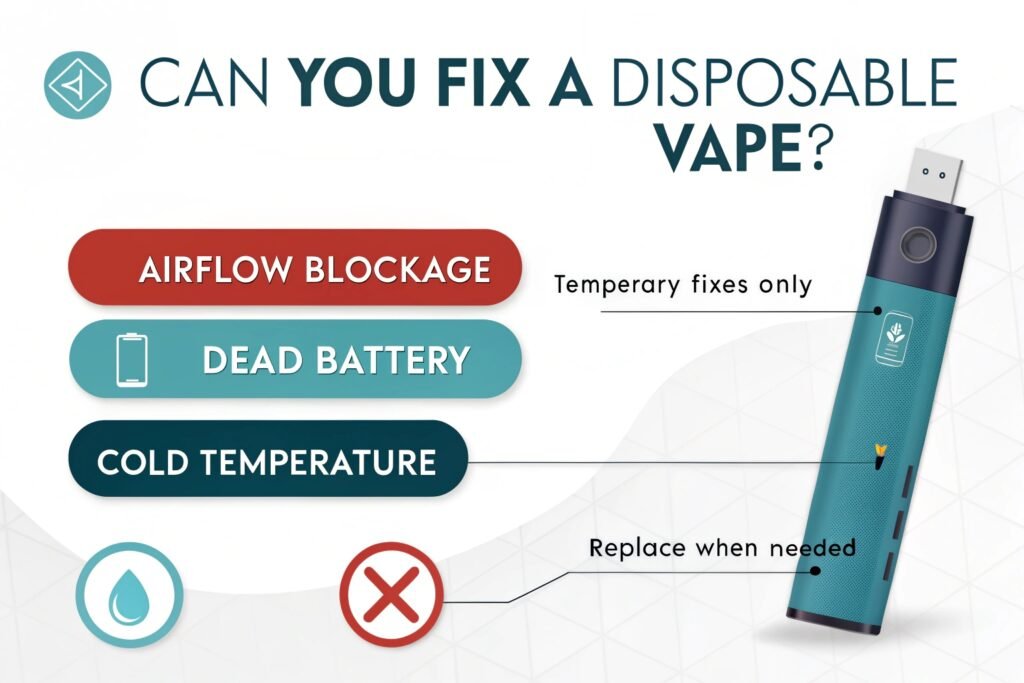
"An image of a disposable vape surrounded by question marks, symbolizing the question of whether it can be made to work again"
I've had many customers ask me if they can get more life out of their disposables. Here’s what I usually tell them.
How do I make my disposable vape work again?
Simple steps can sometimes bring it back to life.
The common reasons why a disposable vape may stop working include a [blocked airflow](https://vaping360.com/learn/how-to-fix-a-disposable-vape/)11, a [low battery](https://www.ecigarettedirect.co.uk/ashtray-blog/2023/05/disposable-vape-troubleshooting.html)22, or a [viscous e-liquid](https://www.terpy.shop/blog/boling-liquid-in-the-mouth-when-using-e-cig/)33 that is not flowing properly. Drawing from my experience with vaping devices and troubleshooting, I've identified the following key factors. The blocked airflow prevents the sensor from detecting the inhale and activating the device – a blocked airflow prevents the sensor from detecting the inhale and activating the device, resulting in no vapor production. The low battery means that the device cannot generate enough power to heat the coil and produce vapor – a low battery means that the device cannot generate enough power to heat the coil and produce vapor, rendering the device unusable. The viscous e-liquid may not flow properly, especially in cold conditions, preventing it from reaching the coil and vaporizing – a viscous e-liquid may not flow properly, especially in cold conditions, preventing it from reaching the coil and vaporizing. The e-liquid leakage can flood the coil and prevent it from heating properly – e-liquid leakage can flood the coil and prevent it from heating properly, hindering vapor production and potentially damaging the device. The manufacturing defects can lead to faulty components and prevent the device from functioning correctly – manufacturing defects can lead to faulty components and prevent the device from functioning correctly, resulting in inconsistent or non-existent vapor production.
The potential methods to try to revive a disposable vape include clearing the airflow, warming the device, and gently tapping it. Through analyzing user feedback and troubleshooting guides, I've identified the following key solutions. The clearing the airflow by gently blowing into the mouthpiece or using a thin object to remove any obstructions – clearing the airflow ensures that the sensor can detect the inhale and activate the device, potentially restoring vapor production. The warming the device slightly by holding it in your hands or placing it in a warm (not hot) area to improve e-liquid flow – warming the device slightly improves e-liquid flow, allowing it to reach the coil and potentially restore vapor production. The gently tapping the device to dislodge any air bubbles or e-liquid that may be blocking the coil – gently tapping the device dislodges any air bubbles or e-liquid that may be blocking the coil, potentially restoring vapor production. The trying a few short, quick puffs to prime the coil and activate the device – trying a few short, quick puffs primes the coil and activates the device, ensuring that it is ready to produce vapor when inhaled. The avoiding extreme temperatures or humidity, which can damage the battery or e-liquid – avoiding extreme temperatures or humidity prevents damage to the battery or e-liquid, ensuring reliable performance.
The risks and limitations of attempting to revive a dead disposable vape include potential damage to the device, inconsistent results, and the fact that it is not a permanent solution. Through analyzing user experiences and safety guidelines, I've identified the following key considerations. The potential damage to the device can result from attempting to disassemble or modify the device – potential damage to the device can result from attempting to disassemble or modify the device, which can be dangerous and may lead to malfunctions. The inconsistent results mean that the methods may work temporarily or not at all, depending on the cause of the issue – inconsistent results mean that the methods may work temporarily or not at all, depending on the cause of the issue, making it an unreliable solution. The fact that it is not a permanent solution means that the device is ultimately designed for single-use and will eventually need to be replaced – the fact that it is not a permanent solution emphasizes the importance of proper usage and storage to prolong the device's lifespan. The safety concerns can arise from attempting to tamper with the battery or other internal components – safety concerns can arise from attempting to tamper with the battery or other internal components, which can lead to overheating, explosions, or other hazards. The warranty voiding can occur if the user attempts to disassemble or modify the device, rendering it ineligible for replacement or refund – warranty voiding can occur if the user attempts to disassemble or modify the device, leaving them without recourse if the device malfunctions.
Can disposable vapes be used again?
This is a common question.
While disposable vapes are designed for single use, they can sometimes be used again if they stop working prematurely. However, they cannot be refilled or recharged. Any attempts to "use them again" are essentially troubleshooting steps, not intended uses.
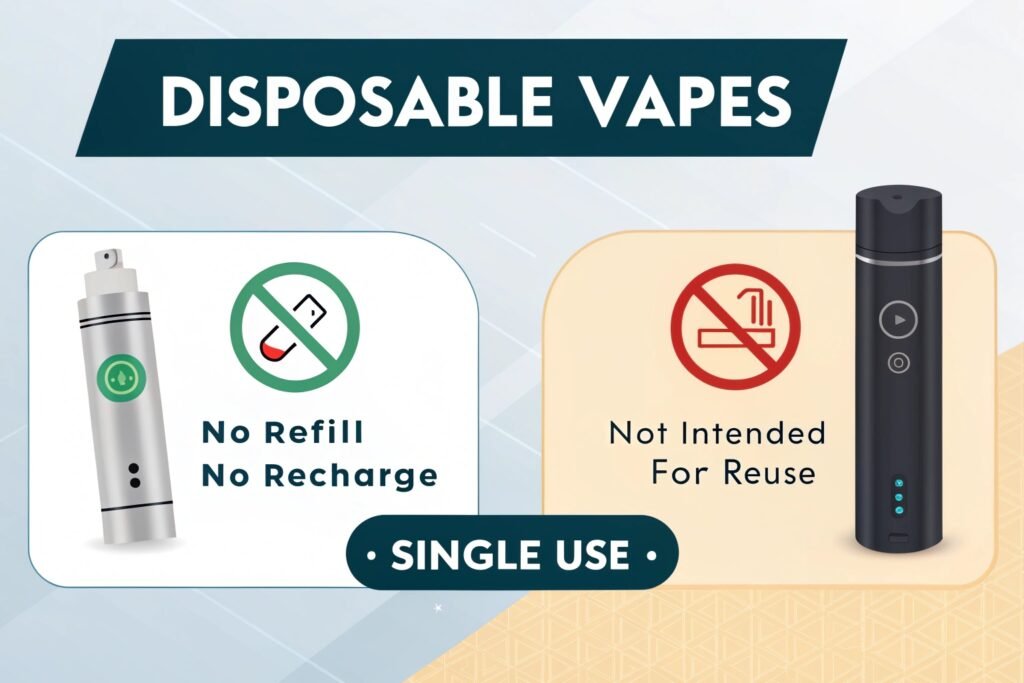
"An image of a disposable vape with a crossed-out recycle symbol, highlighting the fact that it is designed for single use"
It's important to understand their limitations.
The design features of disposable vapes that limit their reusability include the non-replaceable battery4, the sealed e-liquid reservoir5, and the lack of user-serviceable parts. Drawing from my knowledge of disposable vapes and their construction, I've identified the following key features. The non-replaceable battery is designed to last only as long as the e-liquid supply, preventing the device from being used after the battery is depleted – the non-replaceable battery is designed to last only as long as the e-liquid supply, preventing the device from being used after the battery is depleted. The sealed e-liquid reservoir cannot be refilled, limiting the device to a single use – the sealed e-liquid reservoir cannot be refilled, limiting the device to a single use. The lack of user-serviceable parts means that if a component fails, the entire device must be replaced – the lack of user-serviceable parts means that if a component fails, the entire device must be replaced, as individual parts are not available for purchase. The the small size and complex internal circuitry make it difficult to disassemble and reassemble the device without causing damage – the small size and complex internal circuitry make it difficult to disassemble and reassemble the device without causing damage, requiring specialized tools and knowledge. The the low cost of disposable vapes makes it more practical to replace the device rather than attempt to repair it – the low cost of disposable vapes makes it more practical to replace the device rather than attempt to repair it, as the cost of repair may exceed the cost of a new device.
The factors that determine whether a disposable vape can be used again include the remaining e-liquid, the battery life, and the presence of any malfunctions. Through analyzing user experiences and device performance, I've identified the following key indicators. The remaining e-liquid determines how many more puffs can be taken before the device is empty – the remaining e-liquid determines how many more puffs can be taken before the device is empty, limiting the device's lifespan. The battery life must be sufficient to power the coil and vaporize the remaining e-liquid – the battery life must be sufficient to power the coil and vaporize the remaining e-liquid, ensuring that the device can function properly. The presence of any malfunctions, such as a faulty sensor or a short circuit, can prevent the device from working, regardless of the remaining e-liquid or battery life – the presence of any malfunctions can prevent the device from working, regardless of the remaining e-liquid or battery life. The the proper storage conditions can prolong the battery life and prevent damage to the device – the proper storage conditions can prolong the battery life and prevent damage to the device, ensuring reliable performance. The the user's vaping habits, such as puff duration and frequency, can affect the device's lifespan – the user's vaping habits can affect the device's lifespan, with longer and more frequent puffs potentially depleting the battery and e-liquid more quickly.
The potential benefits and drawbacks of attempting to reuse a disposable vape include saving money, reducing waste, and the risk of device malfunction6. Through analyzing user experiences and environmental considerations, I've identified the following key factors. The saving money can result from extending the lifespan of the device and avoiding the need to purchase a new one – saving money can result from extending the lifespan of the device and avoiding the need to purchase a new one. The reducing waste can help minimize environmental impact by decreasing the number of disposable vapes that end up in landfills – reducing waste can help minimize environmental impact by decreasing the number of disposable vapes that end up in landfills. The the risk of device malfunction can lead to a poor vaping experience or potential safety hazards – the risk of device malfunction can lead to a poor vaping experience or potential safety hazards. The the inconsistent performance can result from a depleted battery or clogged airflow, leading to unsatisfying puffs – the inconsistent performance can result from a depleted battery or clogged airflow, leading to unsatisfying puffs. The the limited control over the vaping experience can be frustrating for users who prefer to customize their settings – the limited control over the vaping experience can be frustrating for users who prefer to customize their settings.
How do you force a disposable vape to hit?
This isn't recommended, but let's address it.
Forcing a disposable vape to hit is generally not recommended as it can damage the device or pose safety risks. However, some users try taking quick, short puffs or gently tapping the device to encourage vapor production. These methods are not guaranteed and may shorten the device's lifespan.
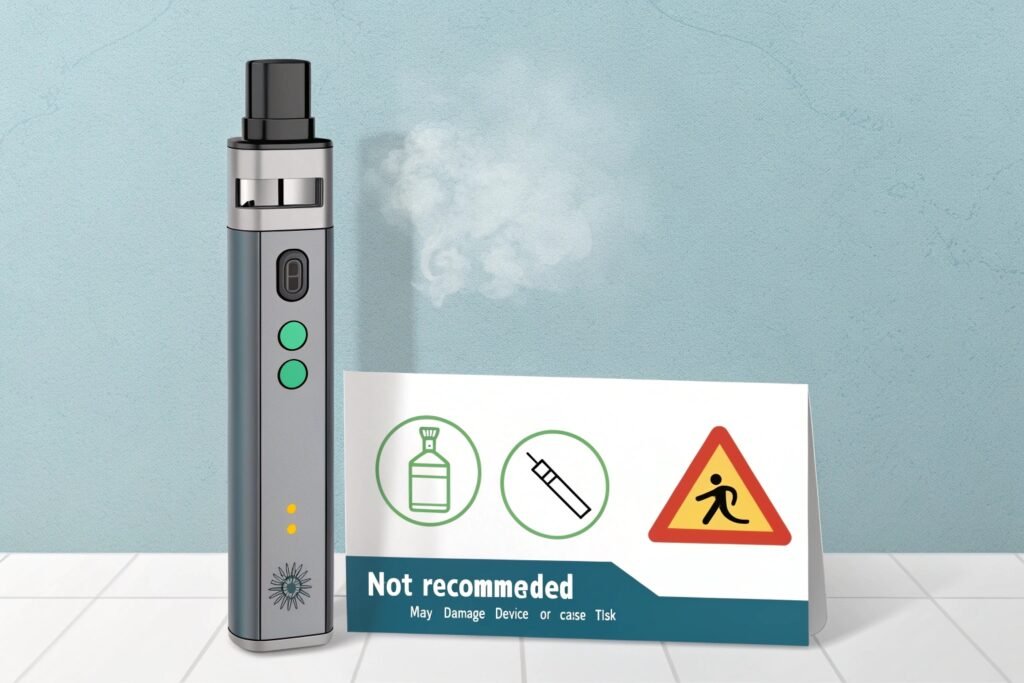
"An image of a person attempting to forcefully use a disposable vape, symbolizing the potential risks and ineffectiveness of such methods"
It's better to troubleshoot than to force it.
The reasons why forcing a disposable vape to hit is not recommended include the risk of damaging the device, the potential for battery malfunction7, and the possibility of e-liquid leakage8. Drawing from my knowledge of disposable vapes and their safety considerations, I've identified the following key factors. The risk of damaging the device can result from applying excessive pressure or force, which can break internal components – the risk of damaging the device can result from applying excessive pressure or force, which can break internal components and render the device unusable. The potential for battery malfunction can occur if the battery is stressed or overheated, leading to reduced performance or even explosion – the potential for battery malfunction can occur if the battery is stressed or overheated, leading to reduced performance or even explosion. The possibility of e-liquid leakage can result from forcing the device, which can cause the e-liquid to flood the coil and prevent proper vaporization – the possibility of e-liquid leakage can result from forcing the device, which can cause the e-liquid to flood the coil and prevent proper vaporization. The the inconsistent performance9 can result from using improper techniques, leading to unsatisfying puffs or no vapor production at all – the inconsistent performance can result from using improper techniques, leading to unsatisfying puffs or no vapor production at all. The the warranty voiding can occur if the user attempts to disassemble or modify the device, rendering it ineligible for replacement or refund – the warranty voiding can occur if the user attempts to disassemble or modify the device, leaving them without recourse if the device malfunctions.
The alternative methods to try instead of forcing a disposable vape to hit include checking the airflow, warming the device, and taking gentle puffs. Through analyzing troubleshooting guides and user feedback, I've identified the following key solutions. The checking the airflow for any obstructions and clearing them if necessary to ensure proper airflow – checking the airflow for any obstructions and clearing them if necessary ensures proper airflow and allows the sensor to detect the inhale. The warming the device slightly by holding it in your hands to improve e-liquid flow – warming the device slightly improves e-liquid flow, allowing it to reach the coil and potentially restore vapor production. The taking gentle puffs to prime the coil and activate the device – taking gentle puffs primes the coil and activates the device, ensuring that it is ready to produce vapor when inhaled. The ensuring the device is stored properly in a cool, dry place to prevent damage to the components – ensuring the device is stored properly in a cool, dry place prevents damage to the components and ensures reliable performance. The avoiding extreme temperatures or humidity, which can damage the battery or e-liquid – avoiding extreme temperatures or humidity prevents damage to the battery or e-liquid, ensuring consistent performance.
The potential consequences of forcing a disposable vape to hit include device damage, battery failure, and potential safety hazards. Through analyzing safety guidelines and user experiences, I've identified the following key risks. The device damage can result from breaking internal components or causing e-liquid leakage – device damage can result from breaking internal components or causing e-liquid leakage, rendering the device unusable. The battery failure can occur if the battery is stressed or overheated, leading to reduced performance or even explosion – battery failure can occur if the battery is stressed or overheated, leading to reduced performance or even explosion. The potential safety hazards can include electrical shock or exposure to harmful chemicals – potential safety hazards can include electrical shock or exposure to harmful chemicals. The the inconsistent performance can result from using improper techniques, leading to unsatisfying puffs or no vapor production at all – the inconsistent performance can result from using improper techniques, leading to unsatisfying puffs or no vapor production at all. The the warranty voiding can occur if the user attempts to disassemble or modify the device, rendering it ineligible for replacement or refund – the warranty voiding can occur if the user attempts to disassemble or modify the device, leaving them without recourse if the device malfunctions.
Can you fix a faulty disposable vape?
What are the chances of a real fix?
Fixing a faulty disposable vape is generally not possible due to their design and construction. They are not intended to be disassembled or repaired. While some temporary solutions may work, they are often unreliable, and the device will eventually need to be replaced.
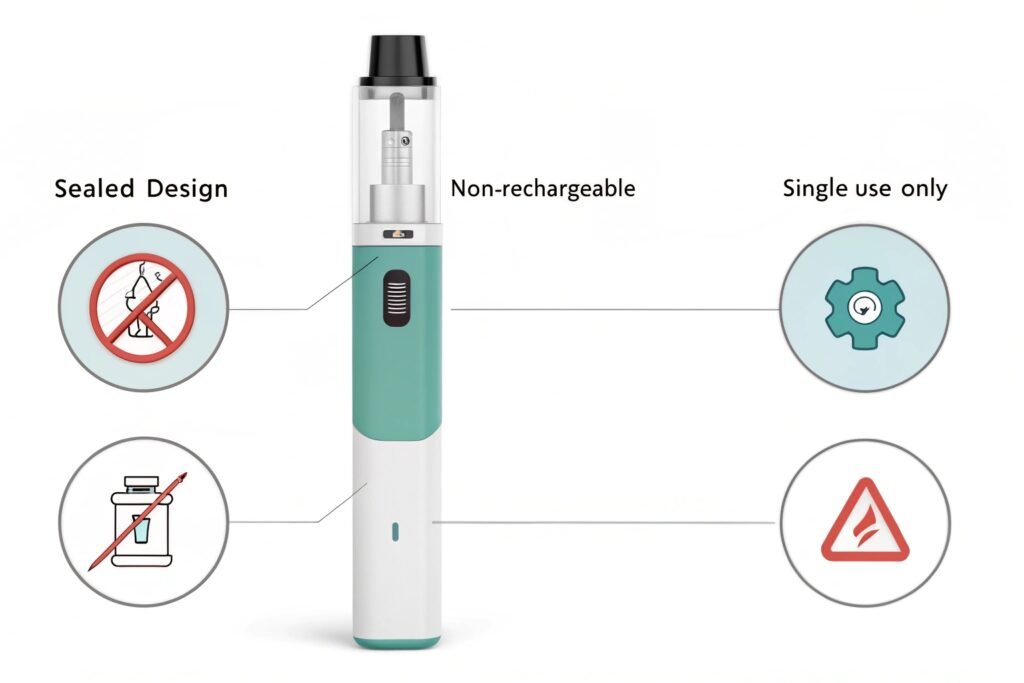
"An image of a faulty disposable vape surrounded by tools, representing the challenges and low success rate of attempting to fix it"
It's best to manage expectations.
The reasons why disposable vapes are difficult to fix include the sealed components1, the small size, and the lack of replaceable parts. Drawing from my knowledge of disposable vapes and their construction, I've identified the following key limitations. The sealed components prevent easy access to the internal parts, making it difficult to diagnose and repair any issues – the sealed components prevent easy access to the internal parts, making it difficult to diagnose and repair any issues without causing damage. The small size of the components makes it challenging to handle and repair them without specialized tools and expertise – the small size of the components makes it challenging to handle and repair them without specialized tools and expertise. The lack of replaceable parts means that if a component fails, the entire device must be replaced – the lack of replaceable parts means that if a component fails, the entire device must be replaced, as individual parts are not available for purchase. The the low cost of disposable vapes makes it more practical to replace the device rather than attempt to repair it – the low cost of disposable vapes makes it more practical to replace the device rather than attempt to repair it, as the cost of repair may exceed the cost of a new device. The the complex internal circuitry and intricate connections make it difficult to troubleshoot and repair the device without causing further damage – the complex internal circuitry and intricate connections make it difficult to troubleshoot and repair the device without causing further damage, requiring specialized knowledge and experience.
The common issues that can make a disposable vape faulty include a dead battery, a blocked airflow, and a malfunctioning coil2. Through analyzing user experiences and device performance, I've identified the following key problems. The dead battery means that the device cannot generate enough power to heat the coil and produce vapor – the dead battery means that the device cannot generate enough power to heat the coil and produce vapor, rendering the device unusable. The blocked airflow prevents the sensor from detecting the inhale and activating the device – the blocked airflow prevents the sensor from detecting the inhale and activating the device, resulting in no vapor production. The malfunctioning coil fails to heat the e-liquid properly, leading to weak or non-existent vapor – the malfunctioning coil fails to heat the e-liquid properly, leading to weak or non-existent vapor. The the e-liquid leakage can flood the coil and prevent it from heating properly – the e-liquid leakage can flood the coil and prevent it from heating properly, hindering vapor production and potentially damaging the device. The the manufacturing defects can lead to faulty components and prevent the device from functioning correctly – the manufacturing defects can lead to faulty components and prevent the device from functioning correctly, resulting in a frustrating and unsatisfactory experience.
The alternatives to fixing a faulty disposable vape include purchasing a new disposable vape, switching to a rechargeable vape, or using a refillable pod system3. Through analyzing user preferences and vaping options, I've identified the following key alternatives. The purchasing a new disposable vape is the simplest and most reliable solution, ensuring a functioning device – purchasing a new disposable vape is the simplest and most reliable solution, ensuring a functioning device and a satisfying vaping experience. The switching to a rechargeable vape offers a more sustainable and cost-effective option in the long run – switching to a rechargeable vape offers a more sustainable and cost-effective option in the long run, reducing waste and saving money on disposable devices. The using a refillable pod system allows for more control over the e-liquid and device settings, providing a customizable vaping experience – using a refillable pod system allows for more control over the e-liquid and device settings, providing a customizable vaping experience and potentially reducing costs. The exploring different brands and devices to find one that meets your needs and preferences – exploring different brands and devices helps users find a reliable and satisfying vaping experience. The prioritizing responsible consumption and proper disposal methods to minimize environmental impact – prioritizing responsible consumption and proper disposal methods minimizes environmental impact and promotes sustainability.
Conclusion
While you can try some basic troubleshooting, disposable vapes are mostly unfixable. Focus on proper disposal and consider more sustainable alternatives for long-term use.
-
Explore this resource to learn effective techniques for resolving blocked airflow issues in disposable vapes, ensuring optimal performance. ↩ ↩ ↩
-
This link will provide insights into troubleshooting low battery issues, helping you maximize your vape's lifespan and performance. ↩ ↩ ↩
-
Discover the causes and solutions for viscous e-liquid in disposable vapes, enhancing your vaping experience and device functionality. ↩ ↩ ↩
-
Understanding the implications of non-replaceable batteries can help users make informed choices about disposable vapes. ↩
-
Exploring the impact of sealed e-liquid reservoirs can provide insights into the limitations of disposable vapes. ↩
-
Learning about the risks of device malfunction can help users avoid safety hazards and enhance their vaping experience. ↩
-
Understanding battery malfunction can help you avoid serious risks and ensure safe usage of disposable vapes. ↩
-
Preventing e-liquid leakage is crucial for maintaining device performance and avoiding waste; learn effective prevention methods. ↩
-
Discovering the causes of inconsistent performance can enhance your vaping experience and ensure satisfaction with every puff. ↩

